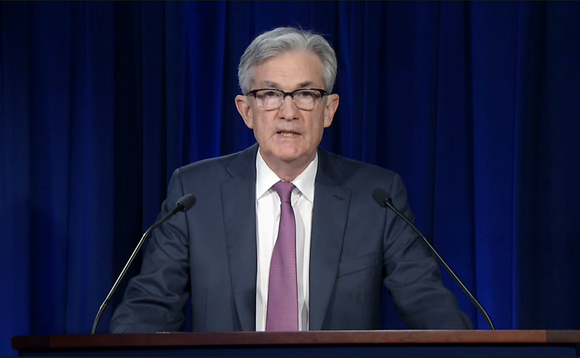The Federal Reserve is set to maintain its hawkish rhetoric until at least 2023, according to industry experts, who predict that monetary policy will remain restrictive for longer than markets are currently pricing in.
The forecasts come ahead of the annual central banking symposium at Jackson Hole, a conference that has historically been the defining monetary policy event of the year and where the industry will be hoping to see an early indication that the global rate-hike cycle is nearing its peak, reports sister site Investment Week.
All eyes will be on Federal Reserve chair Jerome Powell at the conference, who is expected to continue his narrative on fighting inflation while dissuading markets from the notion that the Fed has made a dovish plot, said David Norris, portfolio manager at TwentyFour AM.
Jack Janasiewicz, portfolio manager and lead portfolio strategist at Natixis Investment Manager Solutions, echoed this sentiment, adding that Powell will likely attempt to stress a slower pace of hikes but also a longer period of time in restrictive territory.
"Keep in mind that a slower pace of hikes does not imply a change in the terminal rate either. It simply means higher rates for longer, something that the market is not currently pricing," he said.
Ed Smith, co-CIO of Rathbone Investment Management, also expects Powell to deliver a hawkish message, pushing back against expectations of two rate cuts next year.
"While we believe that inflation is likely to fade strongly in 2023, investors must ask a more specific question, will it fade by late next year by as much as economic forecasts and bond market pricing currently suggest?" he said.
The key question for Jackson Hole, according to Michael Metcalfe, head of macro strategy at State Street Global Markets, is no longer how quickly interest rates need to rise, but how long policy needs to remain restrictive.
"Markets, and to some extent the Fed's own forecasts, point to a relatively sharp peak in rates in 2023 with rate cuts coming in 2024," he said.
"Not only is this beginning to work against the Fed's attempts to tighten financial conditions, but it also looks challenging given the Fed has an outcomes based average inflation target, which by any formulation will still be showing a positive inflation gap even into 2024."
Other industry experts are seeing initial signs that the trend towards rate hikes may be nearing its peak. Richard Flynn, managing director at Charles Schwab UK, said that investors may anticipate that the Fed, ECB and BoE may end their rate hikes in the first half of 2023.
"The Central Bank of Brazil and the Czech National Bank were the first major emerging market central banks to start hiking rates last year. Both banks are now signalling that their respective rates may have peaked," he said.
In the rates markets, 10-year Treasury yields are now hovering around 3%, having dipped as low as 2.6% at the start of August. The S&P 500 index fell 2.1% yesterday, marking the worst single-day decline since mid-June, while the FTSE 100 retreated at the open today as investors braced for further rate hikes.
"The initial market reaction may be muted since we think this type of hawkish narrative is already priced into Treasury yields, together with the understanding that Fed policy will be dictated by data and on a meeting-by-meeting basis," said Norris.
Beyond the symposium, investors will eye for the next inflation data on 13 September as a key input to inform the size of the next Fed's hike. Eleanor Davis, investment analyst at Sanlam Wealth, said that Powell will try to keep his options open until then to gather a clearer picture as new data is released.





